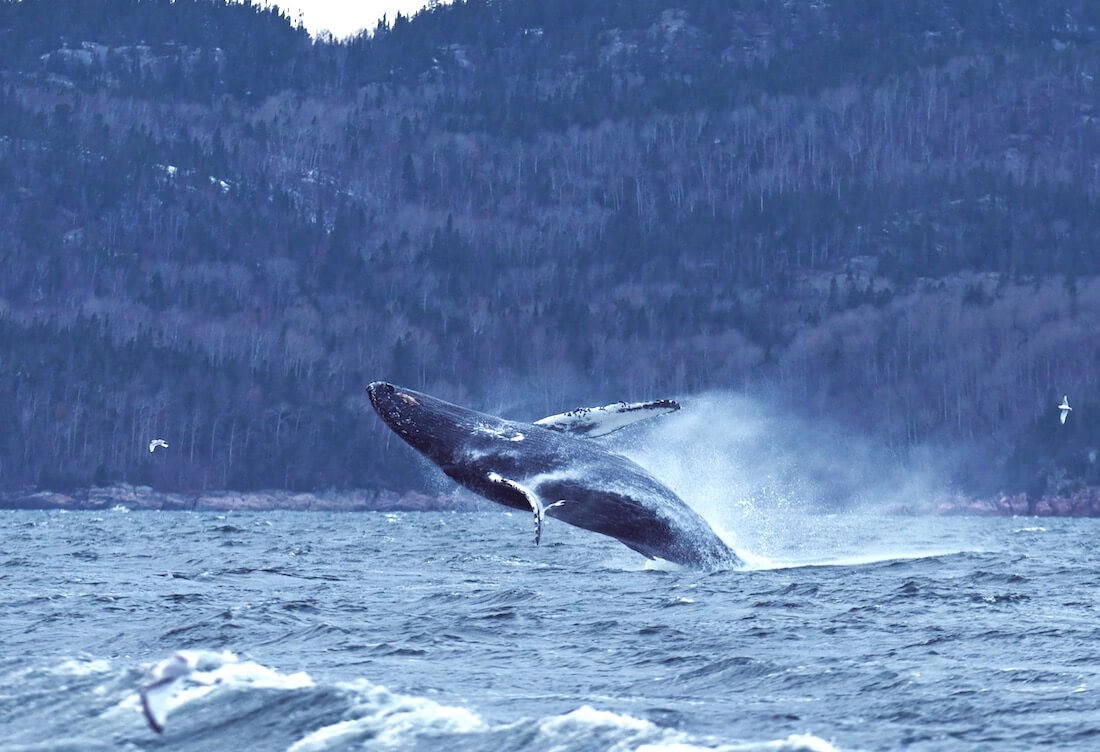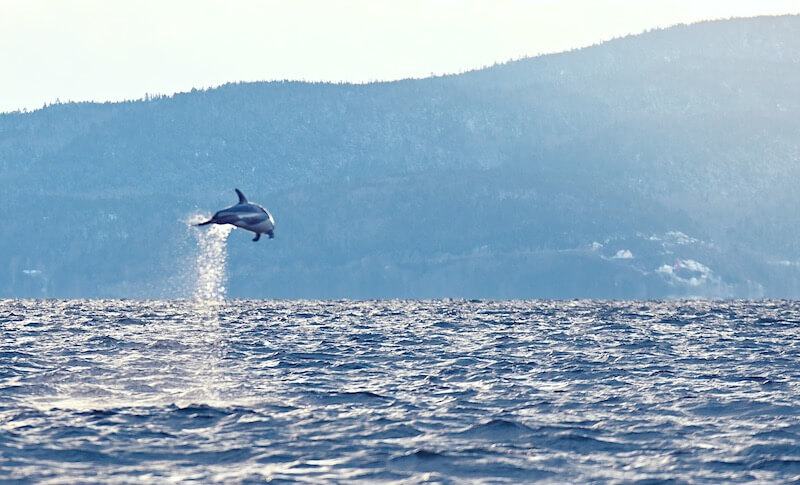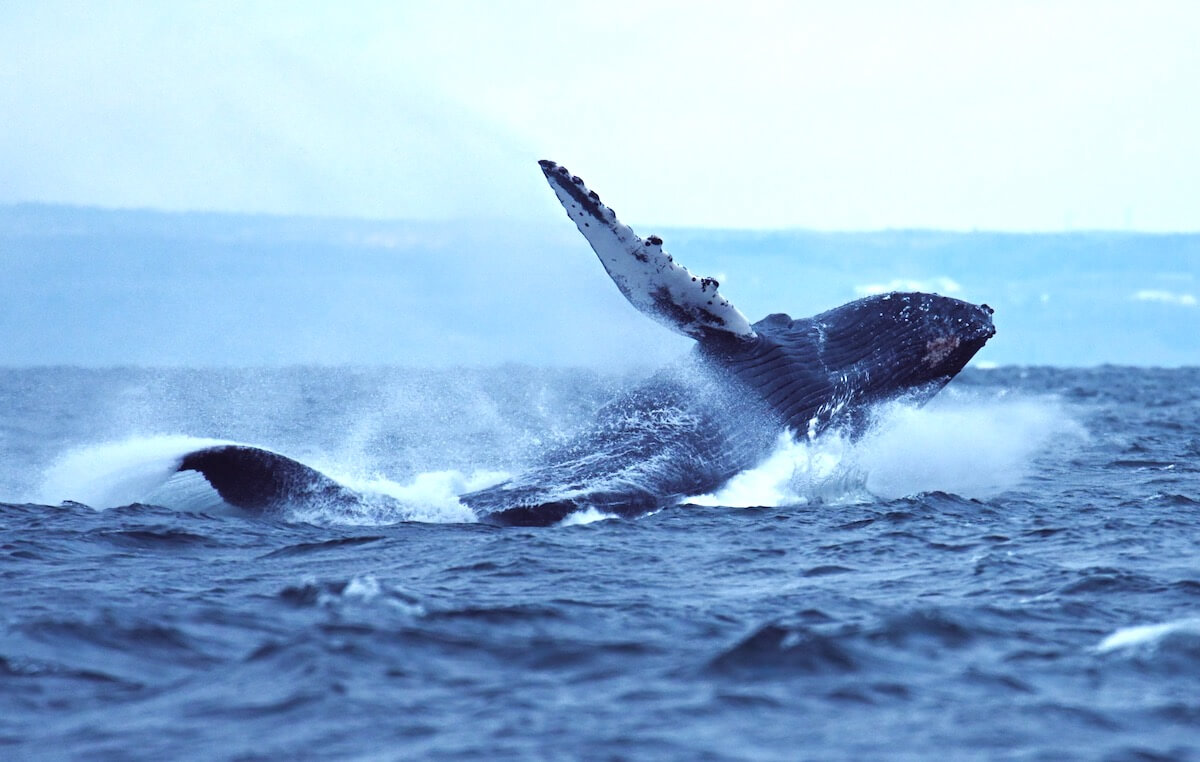Humpback whales were at it again this week, giving us perhaps one last chance to admire their antics in the estuary before they depart for tropical waters. These at-sea sightings are imbued with both nostalgia and excitement in anticipation of the coming summer season.
A rare appearance in the Lower Estuary
Off the coast of Tadoussac Bay, humpback whales in profusion split the waters with their powerful breaths, sometimes alone, sometimes in pairs, but even more impressively, often in large groups, diving in synchrony! Numerous breaches also amazed observers on numerous occasions throughout the week.
Numerous individuals were identified, including Katana, Alias, Gaspar, Queen, Albator and none other than Fleuret! This female has been known to the Mingan Islands Cetacean Study Research Station (MICS) since 1982, and is often seen near Gaspé and in the Mingan Islands and Anticosti Island region. It is rarer, however, to see it venturing into the Lower Estuary. This 40-year-old whale and her mother, Pseudo (H008), are the oldest females still in the area. Fleuret is the mother of seven calves. It was an experienced MICS observer who identified her, noting the particular shape of her dorsal fin and the markings on it.
Around the humpback whales, hundreds of white-sided dolphins navigate the currents. The two species intermingle, the slow movements of the great whales contrasting with the unparalleled fluidity of the delphinids. The latter could be seen surfing the waves, leaping here and there like sea hares. True to form, minke whales, beluga whales, harbour porpoises and grey seals also roamed among the other creatures.
A spectacular show
Further down the estuary, other humpback whales make a spectacle of themselves very close to shore, much to the delight of local residents. They can admire the grooves beneath their large, swollen mouths piercing the surface as they feed, gorging themselves on krill just a few weeks before the start of their long migratory journey.
An admirer of these whales tells us of the phenomenal sightings she witnessed: “On November 6, while observing from the shore between Baie-Comeau and Franquelin, two humpback whales were on the move, splashing abundantly! The first appeared from the tip of a rocky point, leaping into the air for an initial series of four breaches.” A few pectoral shows followed, then a second repetition of these feats. The other individual dives a little closer, displaying bright stripes on its caudal fin. “The two humpback whales then joined up, showing contrasting blows through the November rays of sunlight.”
On the following Tuesday, a stormy day, a second citizen also observed some thirty white-sided dolphins roaming the waves, as well as many seabirds, such as eiders and snow buntings.
At Pointe-Des-Monts, several grey seals dive with a pair of humpback whales, and a minke whale points its dorsal fin out of the water. Near Mingan, a minke whale was seen swimming quietly.
Is the Gulf's marine wildlife at risk?
In Gaspésie, some report the presence of a few humpback whales, while René Roy, an amateur cetologist, is concerned about the apparent decline in the number of aquatic visitors to the estuary: “My observations are in line with what most scientists have also been observing for the past three years. Things are changing drastically for our estuary, and the Gulf is unfortunately not looking good for aquatic fauna.” Hypoxia – a consequence of climate change characterized by a drastic drop in oxygen levels in the water – would affect the entire food chain in the waters of the St. Lawrence, whose top predators are our whales. Unfortunately, this phenomenon is already occasionally observed at the head of the estuary. Is global warming already beginning to affect the abundance of individuals in the area?










